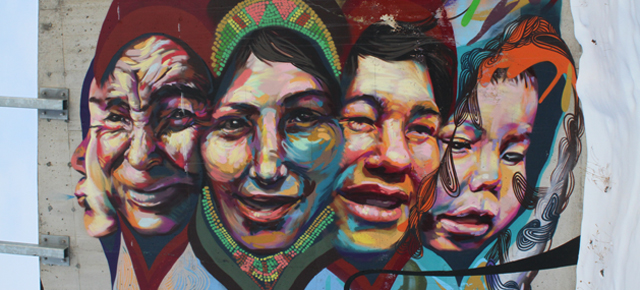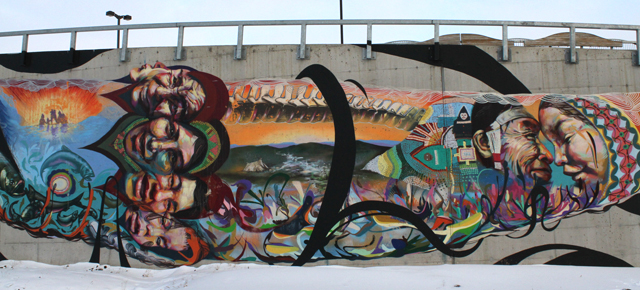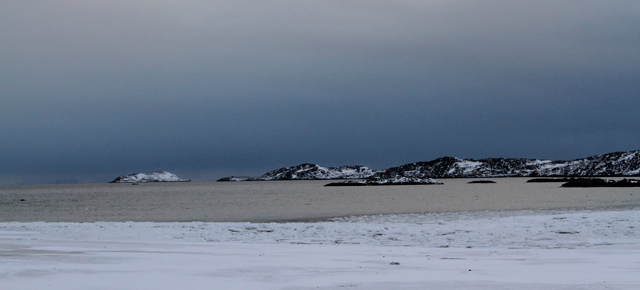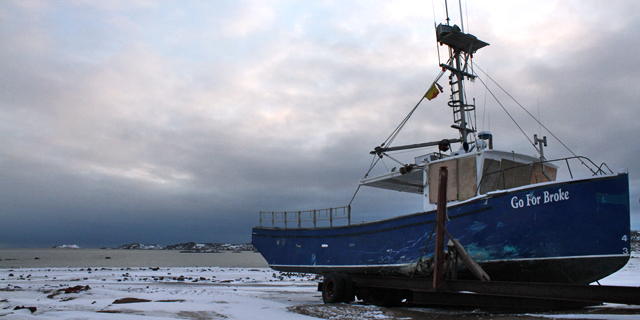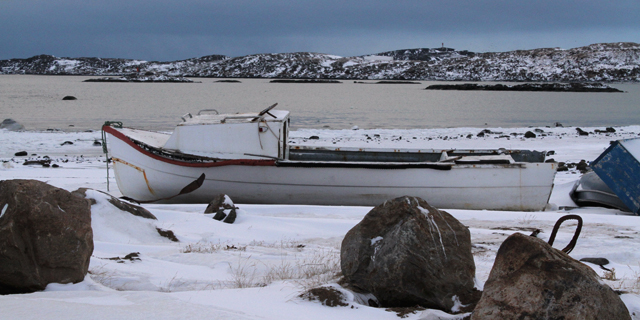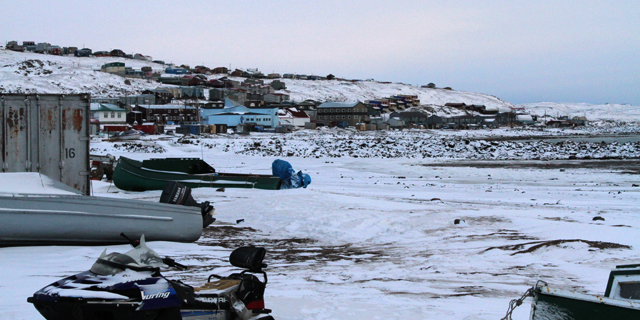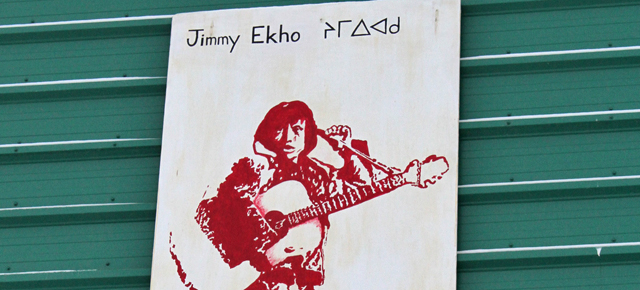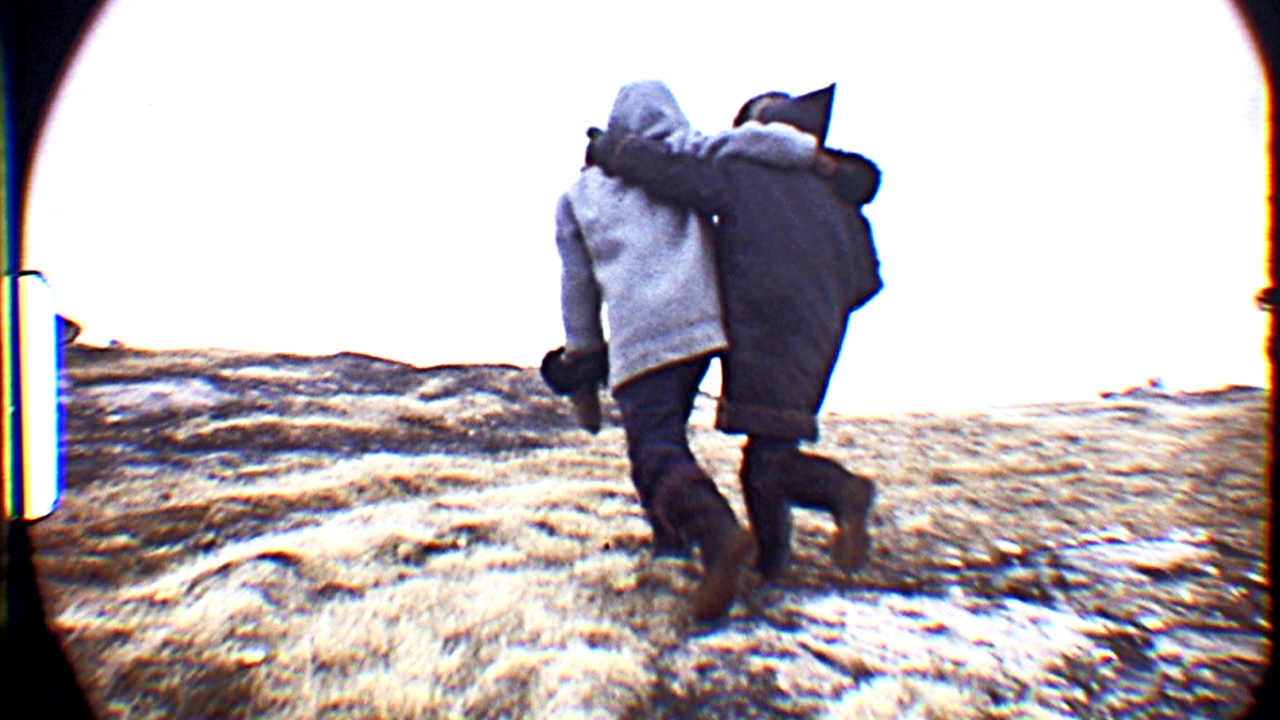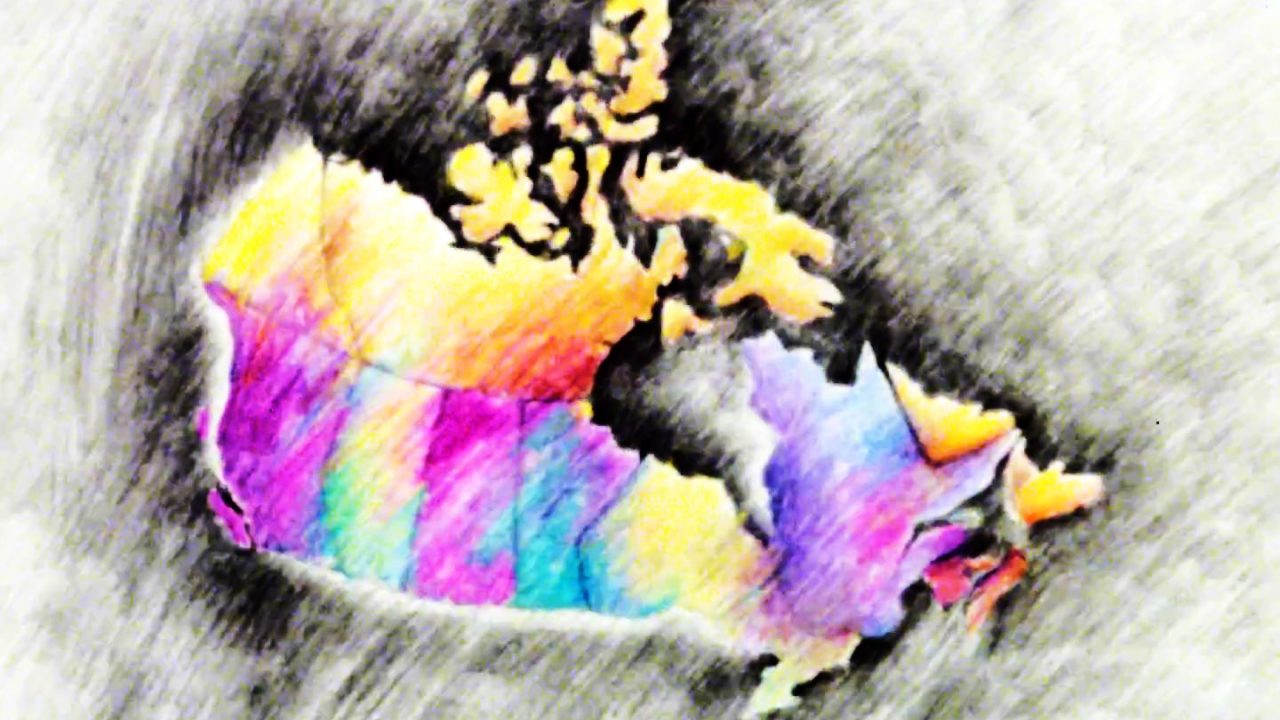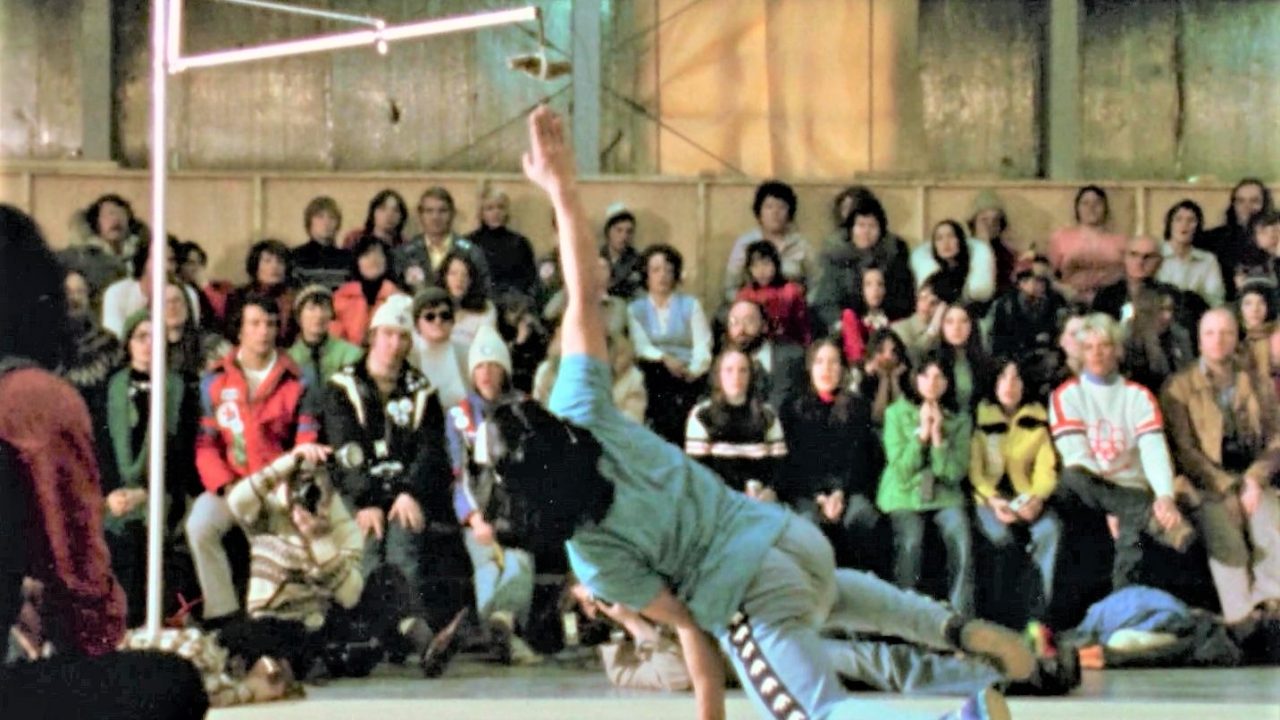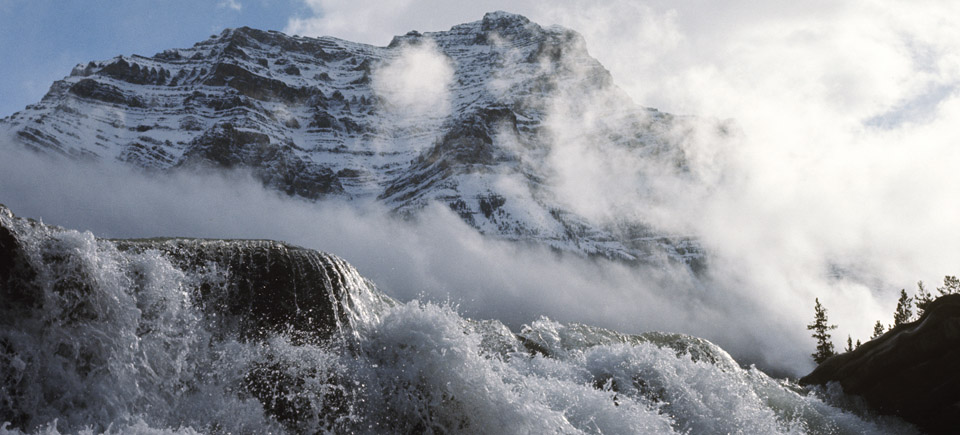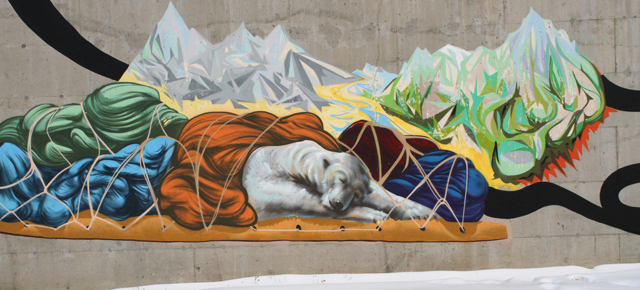
Postcard from Iqaluit, Nunavut
Postcard from Iqaluit, Nunavut
On Saturday afternoon, I went for a little stroll around Iqaluit. I love the North, I love walking, and I love taking photos. So you can imagine my delight at being all at once up North, walking and taking photos.
One of the first things I saw, leaving the Frobisher Inn, was this awesome mural enlivening a parapet near Iqaluit’s Qikiqtani General Hospital. This row of faces (above) was in my view among the mural’s strongest segments. If you’re confused by the snow on the right-hand side (you should be), it’s because I flipped the photo sideways to offer you a better view. Neck health first!
Here you can see how the row of faces formed the neck, so to speak, of a giant whale. (Do whales have necks?) The polar bear gently slumbering on a sled (at the top top of this post) was being pulled by that whale’s tail, which gets you bonus points for fun and awesomeness, in my book. From the information I was able to gather, the mural was the handiwork of Alexa Hatanaka, Patrick Thompson, and Jonathon Cruz. It was apparently completed in 9 days. About that, all I have to say is this: kudos.
Pressing on, I made my way down to the “beach”. The waters were still open (free from the ice cover). A bracing breeze blew in from Frobisher Bay.
I saw a great many boats, including this fine specimen named Go For Broke, which, according to me, is a great name for a sea-going vessel beached in Iqaluit for the winter. I recently went to Jamaica for 2 weeks (I like the tropics too, I don’t discriminate), and some of the boat names there blew my mind. In Port Royal, old stomping grounds of the infamous Henry Morgan, I remember seeing a small fishing boat, painted bright yellow, called Lunch Money. The message here is: if you’re going to go and get a boat, make sure you have a really great name for it first.
This boat didn’t have a name (shame), but I thought it looked pretty, with the water in the back, and the snow-dusted hills. Around the time I reached this boat, a tiny husky puppy, grey and brown and insanely cute, started following me around. Cautious at first, it looked me up and down from a distance before charging into my shins and capsizing over itself, rolling onto its back with puppy glee. (I would provide evidence, believe me, but the 3 photos I took with my phone are a dreadful blur. This dog wouldn’t pose.) We hung out for a good 15 minutes. Then my toes started to freeze and I made myself say goodbye. The puppy followed me for quite a while anyway, until I swiveled on my heels and said “NO”, in my best alpha-dog voice. The dog stopped in its tracks, tilted its head interrogatively, and seeing I wasn’t playing around (I mean, my face was all serious and stuff), it did a U-turn and pounced away, Bambi-style, into the fluffy snow.
When I took this photo, depicting the further end of the shipyard, I already missed the dog – sorely. Part of me vowed that one day, one day, I’d live somewhere where it made sense to have a husky puppy. Somewhere where it could pounce around in fluffy snow at will, Bambi-style.
This Iqaluit dispatch ends with the image of an Iqaluit icon, Jimmy Ekho, which I found posted to the side of a building, downtown. Jimmy Ekho’s approach to music (and, in an essential way, to life itself), was: all Elvis, all the time. The man known as Arctic Elvis (his Elvis seal skin suit is the stuff of legends) passed away in 2008, at 48, but as my short trip to Iqaluit amply demonstrated, his rock & roll spirit lives on.
-
Pingback: Interpreting the North: An interview with Joe Otokiak | NFB.ca blog
